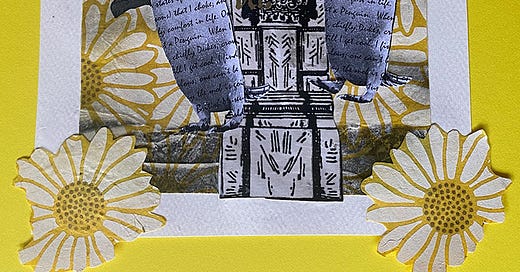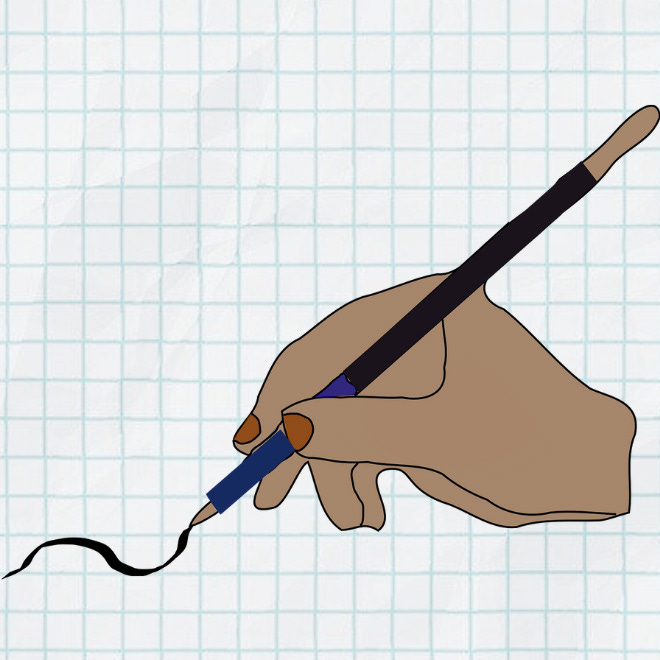One can’t be angry when one looks at a penguin. (Collage and photo by Helen Sword)
When I begin to think at all, I get into states of disgust and fury . . . and have to go to the British Museum and look at penguins till I get cool. I find penguins at present the only comfort in life. One feels everything in the world so sympathetically ridiculous. One can't be angry when one looks at a penguin.
(John Ruskin, letter to Charles Eliot Norton, November 4th, 1860)
What do penguins have to do with productive writing? Everything!
When we come to our writing in a positive frame of mind, we are likely to write more skilfully, creatively, and with greater enjoyment than when we arrive at our desk burdened by anxiety, anger, or doubt. Behavioral psychologist Barbara Fredrickson calls this phenomenon the broaden-and-build cycle of positivity: our successful performance of the task generates an ever broader base of confidence and enjoyment that we can build on, in turn, the next time we undertake it. (Barbara Fredrickson, Positivity: Discover the Upward Spiral That Will Change Your Life).
Crucially, Fredrickson notes, we can access the broaden-and-build cycle even when the positive emotions that get us there have been externally rather that internally induced. I call this the happy penguin effect, based on a study in which Fredrickson and her colleagues invited student volunteers to perform a simple writing task immediately after watching a short video calculated to induce either neutral emotions (autumn leaves gently falling), negative emotions (two people engaged in an escalating argument), or positive emotions (penguins at play).
The researchers reported that the study participants who watched the penguin video went on to write significantly longer, livelier, and more inventive responses than those in the other two groups. In other words, playful penguins can help you become a more productive writer — not to mention a more creative and colorful one.
Before your next “serious” writing session, spend a few minutes doing something that brings you great joy: dancing to upbeat music; picking yourself a bouquet of fresh flowers; hugging your child or partner or pet; watching penguin videos on YouTube.
What are your happy penguins, and how can you make them a regular (and pleasurable) part of your writing routine?
This post was adapted from Chapter 5 of Writing with Pleasure (Princeton University Press, 2023).
Looking for more writing-related inspiration and insights? Step into the WriteSPACE, a vibrant international writing community with members in 30+ countries. You’ll get premium access to resources, workshops, and tools designed to help you hone your wordcraft, sharpen your style, and coax your writing gently but firmly out the door! Click here to try free for 30 days.








This happy penguins phenomenon explains why my child’s existence feels so essential to my creative process! Talking with Abe or even just being surrounded by his projects makes my heart feel lighter and fills me with positive energy for my work. I love that the effect has actually been observed and documented by scientists.
There are some definite themes in the comments so far: kids, partners, furbabies, animal videos! Also plants, music, laughter -- and for me, color (even though penguins themselves are black & white). Yes to joy wherever we find it!